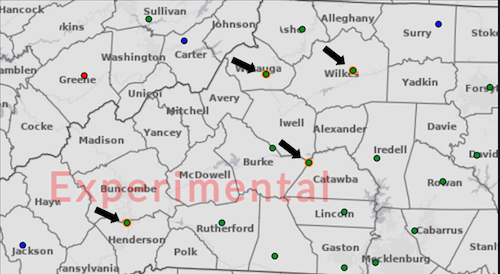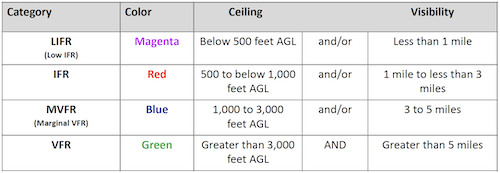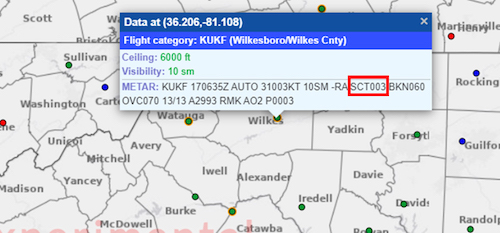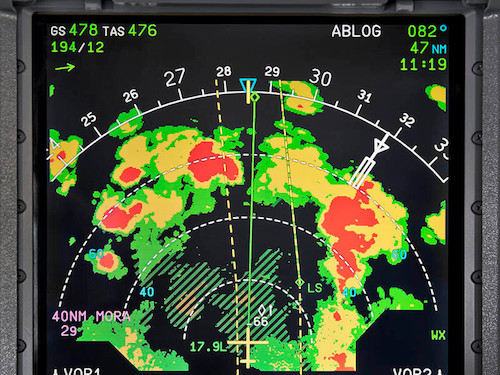|
Feb
20
2023
|
|
Posted 2 years 321 days ago ago by Admin
|
|

Not only have I seen numerous pilots contract it dozens of times, but I have also fallen victim to it. It lurks both day and night. No, I'm not referring to a strange illness that can only be cured by some supplement found on late-night infomercials. Instead, I'm talking about "Green-Dot Syndrome." It usually presents itself in the following manner. The on-call pilot, such as an HAA pilot, law enforcement pilot, etc., receives a flight request. The pilot takes a quick glance at their favorite weather source. The display shows the point of departure as "green," (indicated by the green dot on the weather platform). There’s another green dot near the destination. What more do you need? "It's all green!"
The pilot takes off only to be met with disappointment. The cloud layers are much lower than anticipated, maybe even to the point of having to abort the flight or having to pick up an IFR clearance, if you are so fortunate to be flying an aircraft equipped for that. The pilot usually says a few choice words that relate to how much of a hunk of junk the ASOS or AWOS is or how the forecasters are "wrong again." In reality, it is likely that neither the weather reporting station nor the forecaster got anything wrong. Instead, the pilot contracted a case of "Green-Dot Syndrome." He or she saw all green during that quick-glance weather check—and the green-dot bug bit. Fortunately, there is an easy cure for this condition, and now it will likely be easier than ever to avoid Green-Dot Syndrome from happening in the first place.

Source : aviationweather.gov
A trip down color-code lane

As a quick review, when we discuss “flight categories” from a metrological perspective, we universally know (or should know) a set of colors that are used on all of our governmental produced weather products when describing conditions. The same follows suit on most, if not all, of our favorite weather apps. Flight Categories are distinctly colored for VFR, MVFR, IFR, and LIFR. The classifications are defined by certain cloud base ceilings and surface visibility values. It should be noted that LIFR is a subcategory of IFR and MVFR is a sub-category of VFR. The colors are "attention getters'' to provide quick-glance value.

These flight category colors are certainly not flight rules and should not be confused with the flight rules provided in Part 91. Instead, these categories were explicitly created for weather charts.
Cutting the pie
Going back to Private Pilot 101, we hopefully know that a "ceiling" is defined as the height above the earth's surface of the lowest layer of clouds or obscuring phenomena that is reported as "broken," "overcast," or "obscuration," and not classified as "thin" or "partial." Said another way, only broken or overcast layers are considered a "ceiling." And referring back to our flight category chart above, we see that the categories (colors) are based on ceilings and visibilities.

Cloud layer coverages are measured in oktas or eights. A FEW layer is 0 to 2 oktas in coverage, an SCT (scattered) layer is 3 to 4 oktas, while a BKN (broken) layer is 5 to 7 oktas and an OVC (overcast) layer is 8 oktas. Remember, only BKN or OVC is deemed a ceiling. Because FEW and SCT aren't considered a "ceiling" as outlined in the chart above, their presence isn't taken into consideration in terms of the Flight Category Color Coding. This is where devilish details lurk. You could easily have a SCT layer (up to 3-4 eights) and still have the green-dot flight category showing on your favorite weather site or app. That SCT layer could be insanely low, like 300 AGL, and the flight category dot would still show green. Multiply this situation at all of your closest reporting stations, and it is easy to see how we can fall into the "green dot syndrome." Pilots launch predicated on the screen full of green dots and don't see the FEW and SCT details that may be awaiting them. Not to mention, a SCT layer only has to increase by one additional okta, and you have a "legal" ceiling on your hands.

Potential cure coming
The remedy I have facetiously described for this "syndrome" is just on the horizon. In fact, it is already available on the National Weather Service beta platform (experimental) at https://beta.aviationweather.gov – and then be available on the "legacy" aviationweather.gov platform hopefully by January 2023. The "cure" comes in the way of a new addition that includes an orange(ish) circle around any Green Flight Dot Category that includes a FEW or SCT layer of less than 3000 AGL. This addition is priceless, and hats off to the NWS for considering end-users feedback and creating this addition. While the NWS has taken the lead on this initiative, we can only hope the popular EFB apps will follow suit.
So now, those devilish details will jump out, hopefully this causes pilots to take a closer look to avoid green-dot syndrome.
About the Author - Matt Johnson has been an FAA Designated Pilot Examiner for over a decade, conducting exams ranging from Private to ATP and CFI. Additionally, he is Single-Pilot IFR Air Medical Captain and Part 135 Instructor and Check Airman. He can be reached at [email protected] and via Twitter @HelicopterDPE
READ MORE ROTOR PRO NOV/DEC ISSUE
READ MORE ROTOR PRO: https://justhelicopters.com/Magazine
WATCH ROTOR PRO YOUTUBE CHANNEL: https://buff.ly/3Md0T3y
You can also find us on
Instagram - https://www.instagram.com/rotorpro1
Facebook - https://www.facebook.com/rotorpro1
Twitter - https://twitter.com/justhelicopters
LinkedIn - https://www.linkedin.com/company/rotorpro1